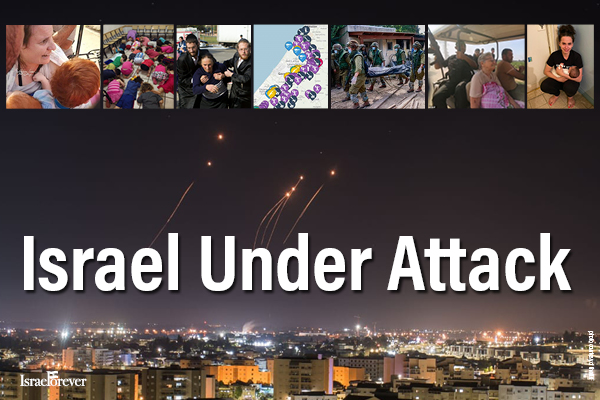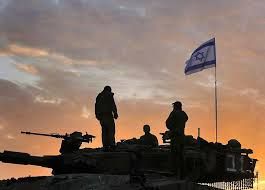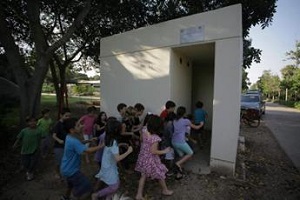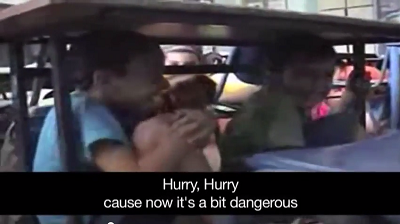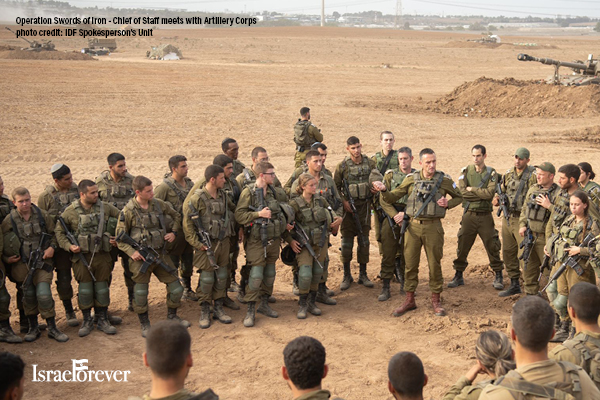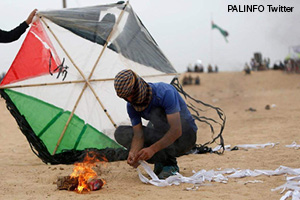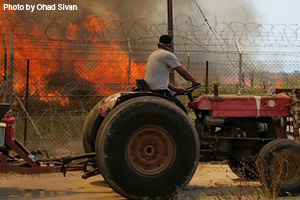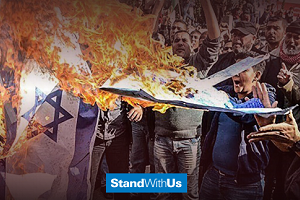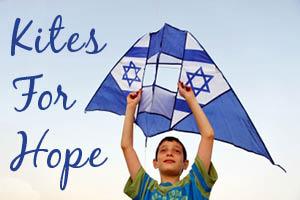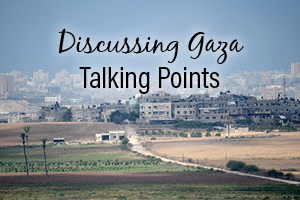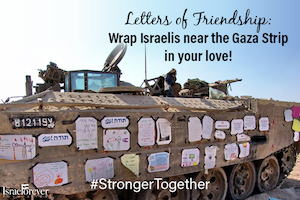
GAZA AND ISRAEL: A HISTORY OF EMBATTLEMENT
Periodically Gaza demands centerstage on the world news. The circumstances change but the conflict remains the same – Israel vs Gaza, Gazans vs Israelis, terrorists vs the State of Israel. Depending on the media source, the story seems different but more often than not, the main message seems to be: Israel = bad / aggressive and possibly even criminal.
Watching this unfold from a distance can be very confusing. What is happening on the ground? How can I know what is true? If the Jewish State is actually bad as so many of these reports imply, what does that say about me as a Jew?
Many questions rise to the surface. Left unanswered, they open the door to damaging misperceptions – the most damaging of which is the undermining of pride in Jewish identity and connection to the only Jewish State, Israel. This is why we have put together teaching resources that address the issue of Israel and Gaza for everyone to learn from.
Our goal is not to promote, justify or explain any political stance or party but rather to focus on the human experience surrounding this issue. Human rights are not political. Neither is morality or decency. This is about understanding what is happening, in context and having the tools and critical thinking skills to make fact-based conclusions.
HAMAS ISRAEL WAR - SWORDS OF IRON (2023-2024)
On October 7, 2023 the world changed.
One Gazan said to his father from somewhere in Israel? This is the transcript translated from Arabic into English and presented to the press.:
"Hi, Dad! I'm talking to you from Mefalsim. Open your WhatsApp now and you'll see all those I killed. Look how many I killed with my own hands! Your son killed Jews!"
Notice he said Jews -not Israelis.
His father replied, "May Allah protect you!"
Son. "Dad, I'm talking to you from a Jewish woman's phone. I killed her and I killed her husband. I killed ten with my own hands! Dad! Ten, With my own hands. Ten! Their blood is on my hands. Put Mum on."
Mother. "Oh, son. May Allah bless you!"
Son. "I swear, Mother, Ten with my own hands."
Mother. "May Allah bring you home safely."
Son to father. "Dad, go back onto WhatsApp now. I want to do a live broadcast from Mefalsim."
Father. "I wish I was with you."
Son. "Mum. Your son is a hero."
Mother. "Kill! Kill! Kill them!"
Then his sister comes on the phone. "Alaa," he tells her, "I'm talking to you from a Jews' phone."
Alaa." You killed ten?"
Son. "Yes. I killed ten. I swear. Open my WhatsApp and see the dead."
The battles were extremely fierce, with numerous acts of heroism. These lines are written before Hezbollah and Iran openly entered the fray.
The assault on Israel quickly expanded to other border attacks, primarily on the Northern border, as well as from Yemen attacking Eilat on the southern tip of Israel, bombing and hijacking ships as well as targeted assaults against US military operations.
HISTORY OF GAZA - ISRAEL CONFLICTS
- Hamas Israel War - Swords of Iron (2023-2024)
- March of Return Gaza riots (30 March 2018 - )
- Operation Protective Edge (8 July - 26 August 2014)
- Operation Pillar of Defense (14-21 November 2012)
- Operation Cast Lead (27 December 2008 - 18 January 2009)
- Hamas violent takeover of the Gaza Strip (2007)
- Disengagement from Gaza and North Samaria (2005)
- Read more for an expansive history prior to the disengagement
DISENGAGEMENT FROM GAZA AND NORTH SAMARIA (2005)
Israel's plan of unilateral disengagement from the Gaza Strip and North Samaria put forward by Prime Minister Ariel Sharon was carried out on 15 August 2005. The purpose of the plan was to improve Israel's security and international status in the absence of peace negotiations. With the implementation of the plan, IDF installations and forces were removed and over 9000 Israeli citizens living in 25 settlements were evicted. By 22 September 2005, Israel's withdrawal from the entire Gaza Strip to the 1967 Green Line, and the eviction of the four settlements in Samaria, was completed.
GUSH KATIF
Jews have lived in Gaza since Biblical times. Famed residents include medieval rabbis such as Rabbi Yisrael Najara and the renowned Rabbi Avraham Azoulai. A historic Jewish community existed in Gaza City prior to its expulsion for safety reasons by the British during the infamous 1929 riots by the city's Arabs. Land for the village of Kfar Darom was purchased in the 1930s and settled in 1946. It was evacuated following an Egyptian siege in the 1948 Arab-Israeli War.
Gush Katif began in 1968 as Jewish was viewed vital to Israel's security in the area, which had been captured the previous year in the 1967 Six-Day War. In 1970, Kfar Darom was reestablished as the first of many Israeli agricultural villages in the area. Throughout the 1980s new communities were established, especially with the influx of former residents of the Sinai.
The sum of exports from the greenhouses of Gush Katif, which were owned by 200 farmers, came to $200,000,000 per year and made up 15% of the agricultural exports of the State of Israel. The combined assets in Gush Katif were estimated at $23 billion.
Of Israel’s total exports abroad, Gush Katif exported:
· 95% of bug-free lettuce and greens
· 70% of organic vegetables
· 60% of cherry tomatoes
· 60% of geraniums to Europe
The Jewish residents of Gush Katif became subject to frequent terror attacks during the First Intifada (1987–1990). During the al-Aqsa Intifada (2000), Gush Katif settlements were the target of thousands of violent attacks by Palestinian militants. More than 6000 mortar bombs and Qassam rockets were launched into Gush Katif, miraculously causing only few fatalities though tremendous property and psychological damage.
HAMAS VIOLENT TAKEOVER OF THE GAZA STRIP (2007)
Since Hamas seized control of the Gaza Strip in June 2007, Gaza has become a base for launching terror attacks and missile barrages on millions of Israeli citizens living in southern and central Israel, including three of Israel's major cities (Tel Aviv, Jerusalem and Beer Sheva) and Ben Gurion international airport.
OPERATION CAST LEAD (27 DECEMBER 2008 - 18 JANUARY 2009)
Operation Cast Lead was Israel’s response to ongoing and prolonged rocket fire by Gaza militants on the western Negev and Gaza vicinity communities.
In mid December, the ceasefire agreement between Israel and the militant organizations in the Gaza Strip (brokered by Egypt in June of 2008), came to its end. Almost immediately, Hamas and Islamic Jihad's military wings resumed their fire on southern Israel, subjecting the area to incessant Qassam, Grad rockets and mortar shell fire.
Prime Minister Ehud Olmert urged the Palestinian people and Hamas to put a stop to the violence, but to no avail. Foreign Minister Tzipi Livni's pleas to the international community to pressure Hamas into halting its fire, did not yield results, and the same came of Cairo's attempts to reinstate the armistice.
The objectives of the Operation were:
· dealing Hamas a forceful blow,
· fundamentally changing the situation in Gaza,
· bringing the rocket attacks against Israeli citizens to a complete halt.
Aware of the dire situation in Gaza, and despite the ongoing military operation, Israel did allow humanitarian aid into the Strip, including truckloads of medical supplies and food, fuel and cooking gas. Egypt sent aid as well.
On January 17, the 21st day for Operation Cast Lead, one week after UN Resolution 1860, Israel declared a unilateral ceasefire
OPERATION PILLAR OF DEFENSE (14-21 NOVEMBER 2012)
Operation Pillar of Defense was an eight-day IDF operation in the Hamas-governed Gaza Strip, which began on 14 November 2012 with the IAF elimination of Hamas chief Ahmed Jabari who was directly responsible for attacks on Israel in the past, as well as the kidnapping and captivity of Gilad Shalit.
The operation was a response to the launch of over 100 rockets at Israel during a 24-hour period, an attack by Gaza militants on an Israeli military patrol jeep within Israeli borders, and an explosion caused by IEDs that targeted Israeli soldiers.
The goals of the operation were:
· to stop rocket attacks against Israeli civilians
· to disrupt the capabilities of militant organizations.
During the course of the operation, according to a UNHCR report, 174 Gazans were killed and hundreds were wounded. Many families were displaced. Some Gazan casualties were caused by misfired rockets landing inside the Gaza Strip. Eight Gazans were executed by members of the Izz ad-Din al-Qassam Brigades for alleged collaboration with Israel.
During the operation, Hamas, the al-Qassam Brigades and the Palestinian Islamic Jihad (PIJ) further intensified their rocket attacks on Israeli cities and towns, firing over 1,456 rockets (including Iranian-made Fajr-5 and Russian-made Grad rockets), into Israel, and an additional 142 which fell inside Gaza itself. Tel Aviv was hit for the first time since the 1991 Gulf War, and rockets were fired at Jerusalem.
By the end of the operation, six Israelis had been killed, two hundred forty were injured, and more than two hundred had been treated for anxiety by Magen David Adom. About 421 rockets were intercepted by Israel's Iron Dome missile defense system, another 142 fell on Gaza itself, 875 fell in open areas, and 58 hit urban areas in Israel.
Canada, Germany, the United Kingdom, the United States, and other Western countries expressed support for what they considered Israel's right to defend itself or condemned the Hamas rocket attacks on Israel. A ceasefire mediated by Egypt was announced on 21 November with both sides claiming victory. Israel said that it had achieved its aim of crippling Hamas's rocket-launching ability, while Hamas stated that Israel's option of invading Gaza had ended.
OPERATION PROTECTIVE EDGE (8 JULY - 26 AUGUST 2014)
Operation Protective Edge sometimes referred to as the 2014 Gaza war, was a military operation launched by Israel on 8 July 2014 in the Hamas-ruled Gaza Strip.
Following the kidnapping and murder of three Israeli teenagers by Hamas members, the IDF conducted Operation Brother's Keeper to arrest militant leaders, Hamas fired rockets into Israel. The Operation began as a measured aerial campaign to disrupt and disable the launching of projectiles into Israel, during which Israel continued to make efforts to de-escalate the conflict, including by accepting numerous ceasefire initiatives put forward by international actors.
Hamas continued to intensify its attacks, rejected all ceasefire initiatives and, on July 17, conducted a major infiltration into Israeli territory through a cross-border assault tunnel. As a result, and in order to locate and neutralize additional cross-border assault tunnels, the Government of Israel ordered a limited ground operation into the Gaza Strip.
Beginning in 2001, Hamas and other terrorist organizations in the Gaza Strip began to dig tunnels for purposes of direct military activity against Israel. Over the years, these tunnels became longer, deeper, more stable, more secure and more daring in purpose. Hamas has used these tunnels for cross-border attacks, smuggling, and as combat tunnels for internal military activity underneath the populated urban areas of the Gaza Strip.
Cross-border assault tunnels are particularly conducive to kidnappings, a strategic goal of the terrorist organizations, as the tunnels allow a substantial number of armed militants to penetrate Israel at once, carry out attacks on IDF forces and Israeli civilians, and smuggle kidnapped Israelis - dead or alive - back into the Gaza Strip.
On August 5, having located and destroyed 32 cross-border assault tunnels (14 that actually penetrated Israeli territory, mostly with openings in the territory of Israeli residential communities, and 81 that were unfinished but approached the border with Israel), IDF ground troops withdrew from the Gaza Strip. They did so despite continued rocket and mortar attacks on Israeli civilians and the absence of a ceasefire. From August 5 through the ceasefire on August 26, Israel continued targeted airstrikes against military objectives in order to defend its civilian population, while at the same time attempting to reach a ceasefire.
Ironically, had Hamas accepted the initial Egyptian-brokered ceasefire that the Arab League endorsed and Israel accepted on July 15 - which featured the same terms as the ceasefire offer to which Hamas ultimately adhered to on August 26 - approximately 90 percent of the casualties incurred during the 2014 Gaza Conflict could have been avoided.
In total, six Israeli civilians and 67 IDF soldiers lost their lives during the 2014 Gaza Conflict. Approximately 2,125 Gazans were killed. An analysis by IDF experts found that as of April 2015, at least 44 percent of the total Gazan fatalities have been positively identified as Hamas militants or militants of other terrorist organizations in the Gaza Strip.
MARCH OF RETURN GAZA RIOTS (30 MARCH 2018 - )
On 30 March 2018, what was originally intended as a six-week campaign composed of a series of protests was launched at the Gaza-Israel border.
Organized by Hamas, the "Great March of Return" is a well thought out media campaign designed to convey the demand that Palestinian refugees and their descendants be allowed to return to what is now Israel. They are also protesting the blockade of the Gaza Strip and the moving of the United States Embassy in Israel from Tel Aviv to Jerusalem.
The protests were supposed to culminate the day of the opening of the US embassy in Jerusalem. Their organizers had proclaimed that protests would be peaceful but, in reality, they quickly turned into violent riots with protestors armed with knives, explosives and firebombs attempting to infiltrate the border into Israel. As time goes by the attacks on Israel are increasing with cross border firebombs delivered via kites and balloons as well as rocket and mortar attacks.


